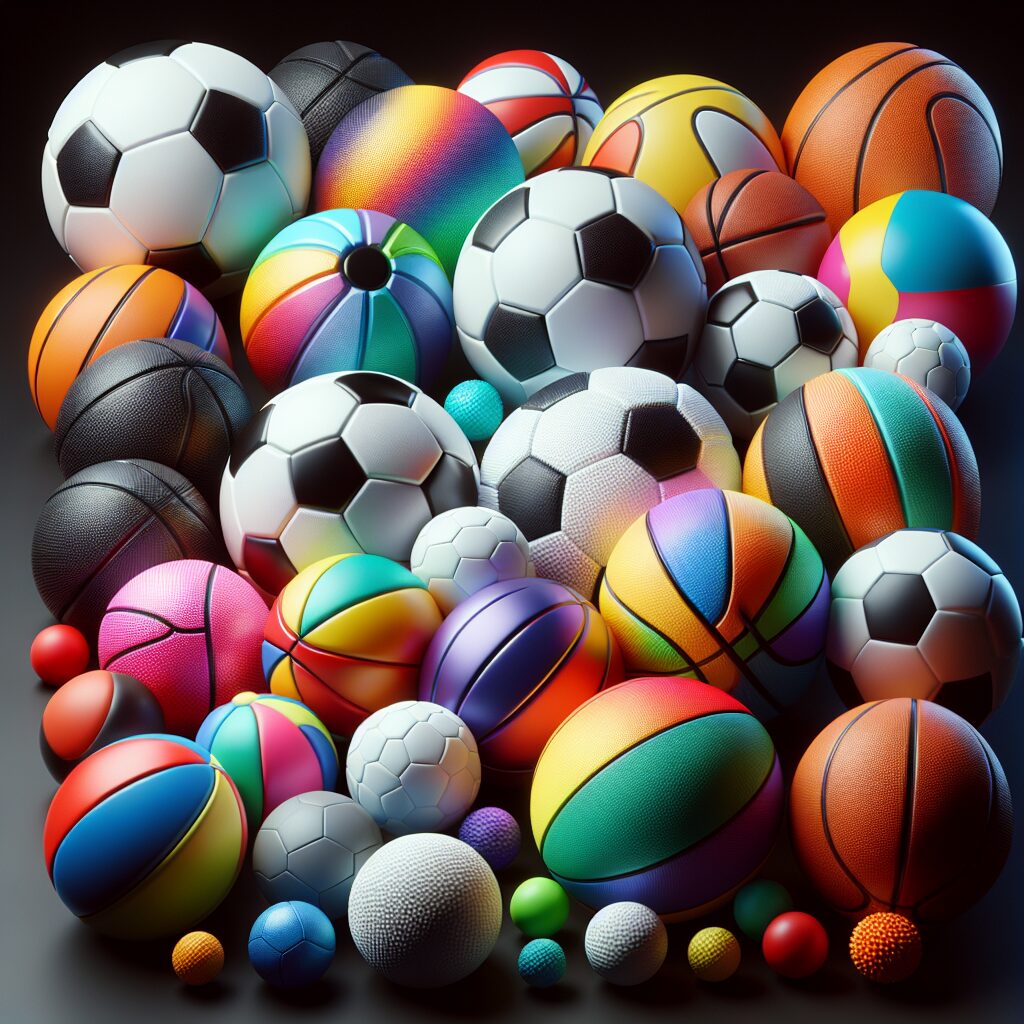Color Choices in Ball Design: Beyond Aesthetics
Color plays a significant role in the design of sports balls, impacting not only their appearance but also their performance on the field. While typically viewed as a mere aesthetic consideration, color choices can have a profound influence on visibility, player performance, and even spectator experience. The use of distinct color combinations and patterns can enhance a ball’s visibility against different backgrounds, aiding players in tracking its trajectory during high-speed action. Moreover, the use of certain colors has been found to evoke specific psychological responses in athletes, potentially boosting their performance and confidence on the field.
As we delve further into the realm of color choices in ball design, it becomes apparent that the impact goes far beyond just how a ball looks. By carefully selecting colors and incorporating unique patterns, designers can optimize player experience, safety, and overall game dynamics. Understanding the nuances of color psychology and how it relates to sports performance is crucial in creating balls that not only catch the eye but also elevate players’ abilities.
Moving forward, we will explore the key takeaways regarding color choices in ball design. We will discuss the science behind color perception, the impact of color on player performance, and the influential role colors play in different sports. By gaining a deeper understanding of the complexities behind color choices, we can acknowledge the transformative power it holds in the sporting realm. So, let’s dive into the fascinating world of colors in ball design and discover the hidden factors that contribute to the excitement and success of various sports. Stay tuned for an enlightening exploration of this often overlooked aspect of sports equipment design.
Key Takeaways
1. Color choices in ball design have a significant impact on performance, visibility, and ball tracking technology. Choosing the right colors can improve player experience and enhance gameplay.
2. Bright, high-contrast colors are preferred to ensure optimal visibility in various lighting conditions and against different backgrounds. This helps players track the ball more effortlessly, reducing errors and improving accuracy.
3. The color of the ball can affect the accuracy of tracking technology and computer vision systems used in sports analysis. Selecting colors that enhance the detectability of visual markers on the ball can improve data capture and analysis, leading to more accurate insights.
4. Color choices are not limited to aesthetics; they play a crucial role in differentiating sports equipment and brands. Unique color combinations and designs can create a recognizable brand identity, promote team pride, and enhance spectator engagement.
5. Understanding the psychology of color is crucial when choosing colors for sports equipment. Certain colors can evoke specific emotions or increase player focus and performance. Consideration should be given to the psychological impact different colors can have on players and how it can influence their mindset during the game.
SEO Optimized Article Title Question: How Do Color Choices in Ball Design Go Beyond Aesthetics?
Section 1: The Psychological Impact of Color Choices in Ball Design
The colors used in ball design can have a significant psychological impact on players and spectators. Different colors evoke various emotions and can even influence performance on the field. Understanding the psychological impact of color choices is essential for designing balls that go beyond aesthetics and enhance gameplay.
Section 2: Color Symbolism in Ball Design
Colors often carry symbolic meanings that can vary across cultures and contexts. Incorporating symbolism into ball design can create a deeper connection with players and fans. For example, a red ball might signify energy, passion, or even danger, while a blue ball can evoke a sense of calmness and trust. Considering these symbolic associations can help ball designers make intentional color choices that resonate with the intended audience.
Section 3: Visibility and Contrast in Ball Design
One crucial aspect of ball design is ensuring visibility and contrast. The colors chosen for the ball need to be easily distinguishable from the playing field, surroundings, and other elements of the game. High visibility and contrasting colors allow players to track the ball accurately, leading to improved gameplay. Factors such as lighting conditions and the sport’s environment must also be taken into account when selecting colors that provide optimal visibility.
Section 4: Branding and Sponsorship Opportunities
Color choices in ball design go beyond aesthetics by offering branding and sponsorship opportunities. By incorporating specific colors associated with a team or sponsor, balls can serve as a marketing tool. Colors associated with a team’s brand or a sponsor’s logo can create a strong visual connection, enhancing brand recognition and consumer loyalty. This aspect of color choices in ball design should not be overlooked, as it can have significant financial implications.
Section 5: Accessible Design Considerations
Inclusive and accessible design is crucial in sports. Color choices in ball design should also address the needs of individuals with visual impairments or color blindness. Using colors that have sufficient contrast and variations in lightness/darkness can help players with visual impairments track the ball effectively. Furthermore, exploring alternative design elements, such as texture or sound, can enhance the accessibility of ball design beyond relying solely on color.
Guides or Tips related to Color Choices in Ball Design: Beyond Aesthetics:
1. How can color choices impact player performance and emotions on the field?
2. What are the cultural and symbolic associations of different colors in ball design?
3. What considerations should be made in terms of visibility and contrast in ball design?
4. How can color choices be used for branding and sponsorship opportunities in sports?
5. What steps can be taken to ensure inclusive and accessible ball design for individuals with visual impairments or color blindness?
Frequently Asked Questions
1. How important are color choices in ball design?
Color choices play a crucial role in ball design as they can impact various aspects of its functionality, such as visibility, branding, player focus, and even performance in specific environments.
2. Can certain colors affect a player’s performance?
Yes, some studies suggest that certain colors can affect a player’s psychological state, focus, and performance. For example, bright colors may enhance energy and excitement, while softer colors can promote relaxation and focus.
3. Is there any scientific evidence supporting the influence of color on the physical performance of a ball?
While color alone may not directly affect the physical performance of a ball, its visibility can impact how players perceive and interact with it. High visibility colors can potentially enhance accuracy, tracking, and depth perception.
4. Are there specific color combinations that work best for different sports?
Yes, different sports may benefit from specific color combinations. For instance, vibrant and contrasting colors are often preferred in fast-paced sports like soccer and basketball, whereas more subdued colors may be favored in sports like golf or tennis.
5. Do color choices have any impact on ball durability?
No, color choices do not have a direct impact on the durability of a ball. However, certain pigments or dyes used for coloring may slightly affect the materials or coating used in the ball, which can indirectly influence durability.
6. Can color choices affect ball visibility under different lighting conditions?
Yes, color choices can significantly impact ball visibility under various lighting conditions. It’s essential to consider the environment in which the ball will be used to ensure optimal visibility and minimal interference with the game or sport.
7. What considerations should be made for colorblind individuals?
When designing balls, it’s important to consider colorblind individuals. Using color combinations that provide sufficient contrast or incorporating additional visual cues can help ensure inclusivity and equal opportunities for all players.
8. Can color choices influence branding and team identification?
Absolutely, color choices in ball design play a vital role in branding and team identification. Consistent use of specific colors can help create a strong association with individual teams or brands, enhancing recognition and fan loyalty.
9. Are there any cultural or regional factors to consider regarding color choices?
Yes, color preferences can vary across different cultures and regions. It’s important to consider cultural associations, symbolism, and local preferences when choosing colors to ensure appeal and acceptance within specific target markets.
10. Can color choices influence the spectator’s experience?
Definitely, color choices in ball design can significantly impact the spectator’s experience. Vibrant and visually appealing colors can create excitement, enhance visibility for viewers, and contribute to an overall enjoyable and engaging sports event.
Final Thoughts
Color choices in ball design go far beyond mere aesthetics; they have implications for performance, visibility, branding, and spectator experience. Understanding the significance of color and its influence on various aspects of ball design is crucial for creating engaging and effective sports equipment.
By carefully considering the psychological and physiological effects of color, as well as cultural factors and practical considerations, ball designers can create products that not only meet the functional requirements of athletes but also cater to the preferences and expectations of different stakeholders, from players to sponsors and fans.




